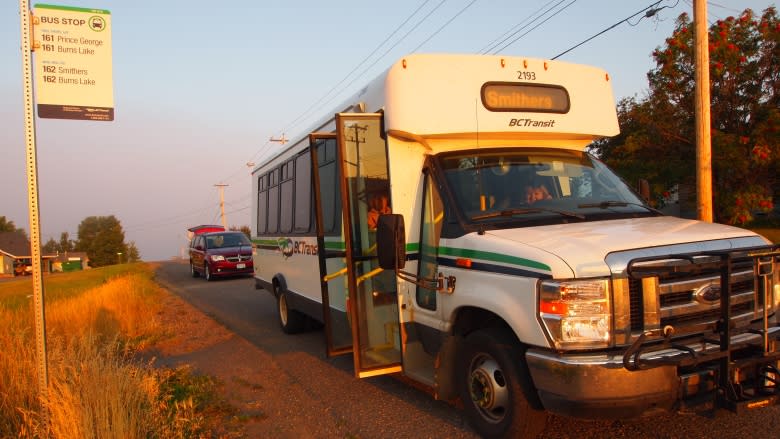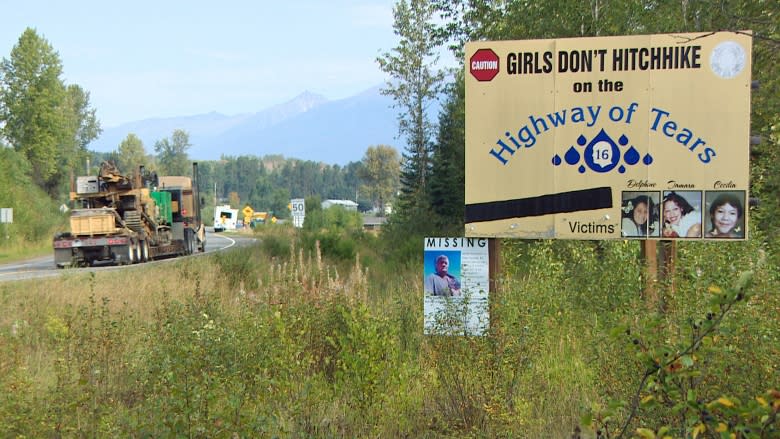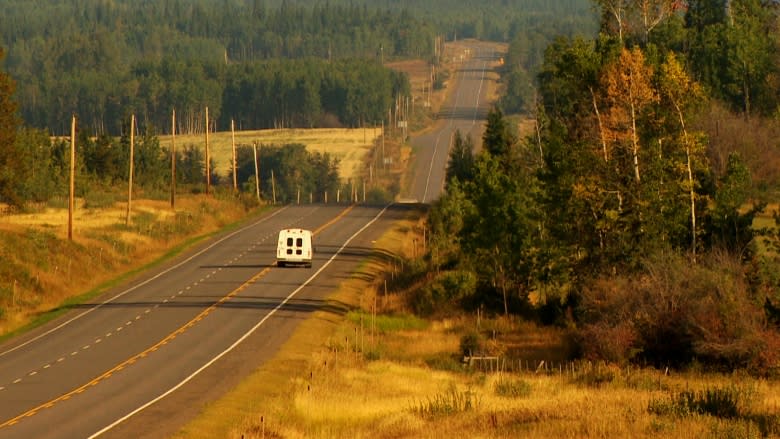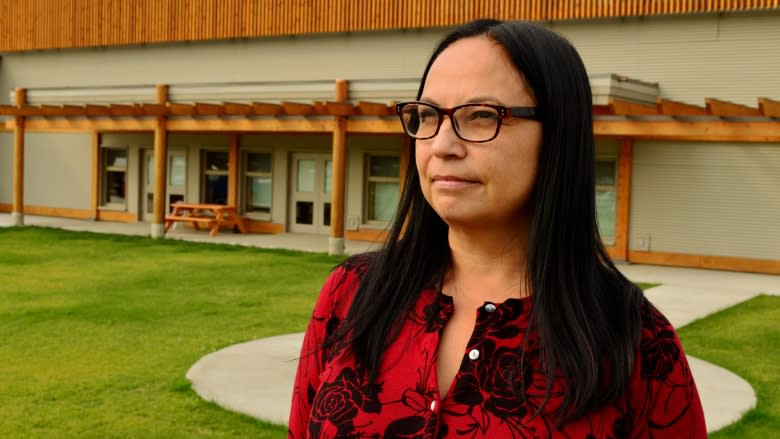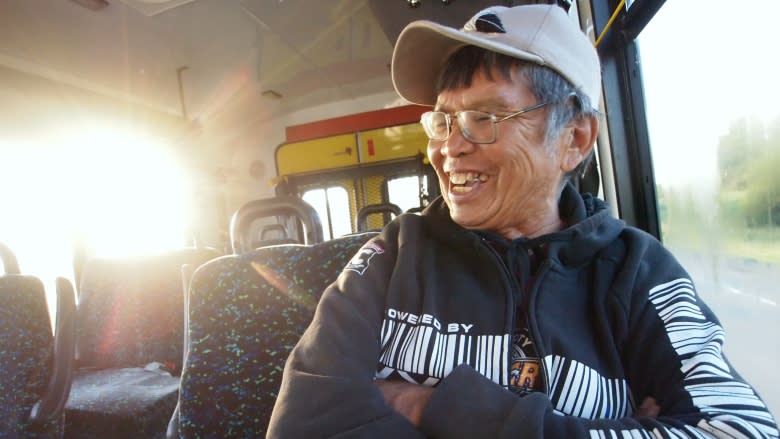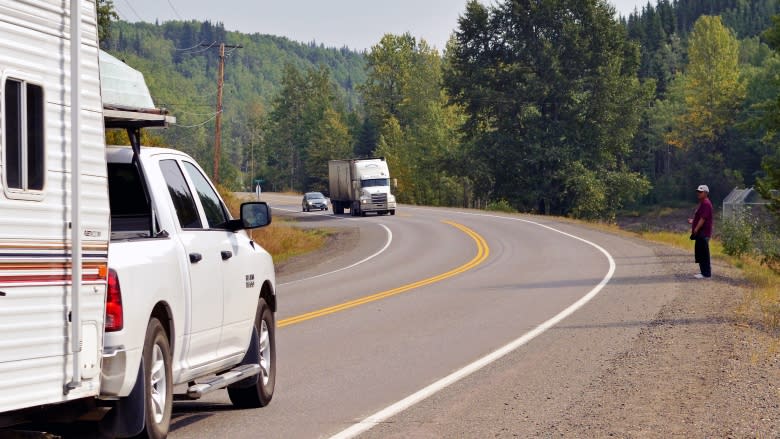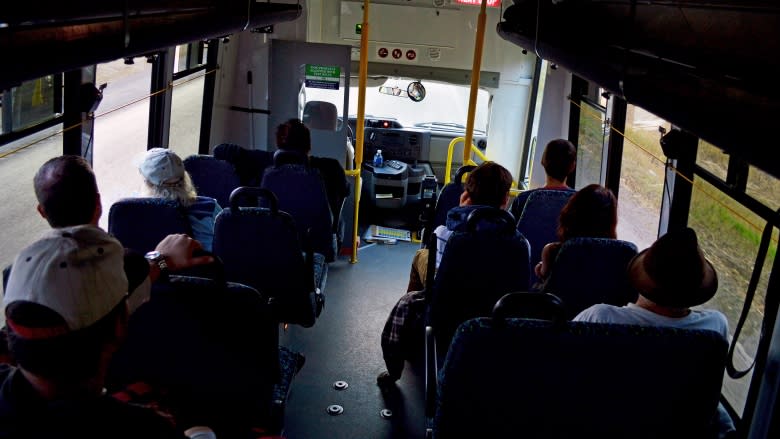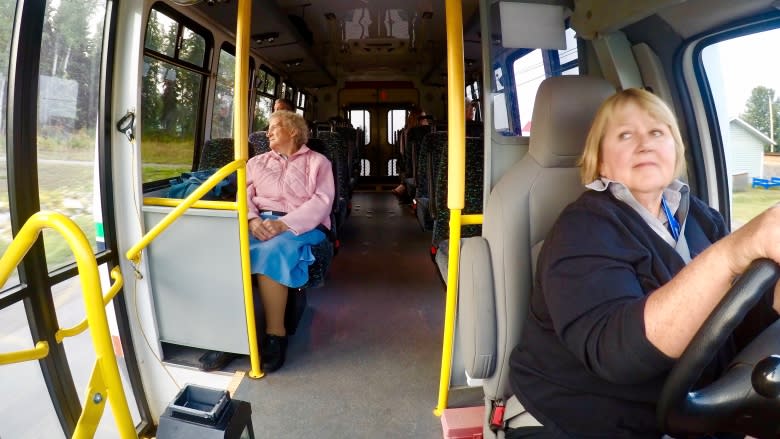'Safe, reliable and affordable': New bus service aims to make notorious Highway of Tears less dangerous
As a B.C. Transit bus swings open its doors in front of the Pine Centre Mall in Prince George, a small crowd of people carrying duffel bags and backpacks file on.
They each stuff $5 into the fare box to take the three-hour ride from Prince George to Burns Lake, a community to the west along B.C.'s Highway 16, a 720-kilometre remote stretch of road that's also known as the Highway of Tears.
"They should have put this bus up years ago before people started going missing," said Roger Joseph, 61, who was seated by a window.
This bus trip is possible because of two new subsidized routes that run along part of Highway 16 between Prince George and Smithers that officials hope will reduce hitchhiking and provide safe, reliable and affordable transit.
Since 1969, police officials have confirmed 18 women and girls have gone missing or have been murdered along this notorious corridor, but Indigenous leaders believe the tally is likely much greater, perhaps as high as 50.
Along this northern highway, communities and First Nations reserves are few and far between. At times traffic is sparse, and it can feel hopelessly remote if you need to go somewhere and have no ride to get there.
After Joseph lost his driver's licence eight years ago, he turned to hitchhiking as a way to make the 230-kilometre trip to Prince George to visit his three daughters. It would take him all day to find someone to pick him up along the highway, and it left his family anxious.
"My daughter, she said, 'Daddy, I don't want you hitchhiking. You're always hitchhiking and we're afraid you might catch a ride with the wrong person.'"
A fear many share
That's a fear shared by many who have walked the highway, or who have driven past others alone on the shoulder.
"Family members will not let family members get on the highway anymore," said Renata Heathcliff, 49.
In her younger days, she was an avid hitchhiker, recalling a scary incident she and a girlfriend had one night when a two-seater car pulled up while they were walking toward Prince George.
The driver opened the door and motioned to the passenger seat saying he had room for just one of them. They both slammed the door and walked away.
Today, she can't imagine hitchhiking let alone hitchhiking on the Highway of Tears.
"That's just not possible. It's just not safe," Heathcliff said.
Without a driver's licence or a car, she had been paying people to drive her from her home on the Nadleh Whut'en First Nation. And with no job, those trips proved too expensive.
Since BC Transit launched the new service at the end of June, Heathcliff has taken the bus four times to make the 140-kilometre trip to Prince George to visit her grandchildren.
'Safe, reliable and affordable'
The two new bus routes cover a 400-kilometre section of Highway 16.
One runs between Prince George and Burns Lake, and the other begins in Burns Lake and goes farther west to Smithers. Each trip costs $5, which is about a tenth of the price currently charged by Greyhound to make a similar trip.
The company has said that it wants to withdraw from the area because of a lack of ridership, but BC Transit says its customer base is growing.
One route between Prince George and Burns Lake averages 20 riders a day, while the other, 12.
"This initiative was about introducing a transit service that was safe, reliable and affordable," said Chris Fudge, a senior regional transit manager at BC Transit.
BC Transit is able to offer the $5 fare because two-thirds of the operating costs are covered by the province, with the remaining portion, just over $129,000, paid for by the communities and First Nations groups along the route.
Many of them had been lobbying for this type of service for years, and some of the most vocal were driven by their own loss.
'Precious jewel'
"It's definitely something I have been personally committed to," said Mary Teegee, executive director of Child and Family Services at Carrier Sekani Family Services.
In 1994, her 16-year-old cousin Ramona Wilson went missing after telling her family she was headed out to a party.
Her body was found in a wooded area near Smithers the following year.
"We lost one of our precious, precious jewels, and because of that, you look at all of the need for safety," Teegee said.
While the motivation for the bus service was to make it safer for people to travel along Highway 16, Teegee said there was also a desire to make it easier for people to get around, whether to shop or go to the doctor.
On a Wednesday morning in September, Richard Skin, 60, was taking a Smithers-bound bus heading for the community of Houston to go to a medical clinic.
"This is pretty nice to have a transit system like this," he said.
A few hours later, he was seen on the side of the highway with this thumb out, trying to catch a ride home after his doctor's appointment. He didn't know the bus made a return trip.
As it wouldn't be there for a few more hours, he decided to keep hitchhiking even though he admitted it was going to be difficult to get a ride by "a small community in the middle of nowhere."
'A dangerous highway'
Currently the bus routes run on alternating days, and they don't connect the entire highway, although BC Transit hopes to add another section later this fall that will link the city of Terrace with New Hazelton.
Officials say they are working to educate the public and increase awareness about the new service and are reviewing the routes.
Heathcliff believes people in her First Nations community know about the new transit line, but she is frustrated that more haven't been using it. She still sees people hitchhiking along the road.
"I see women out there and I don't understand why they're not getting it," she said.
"That's a dangerous highway."

